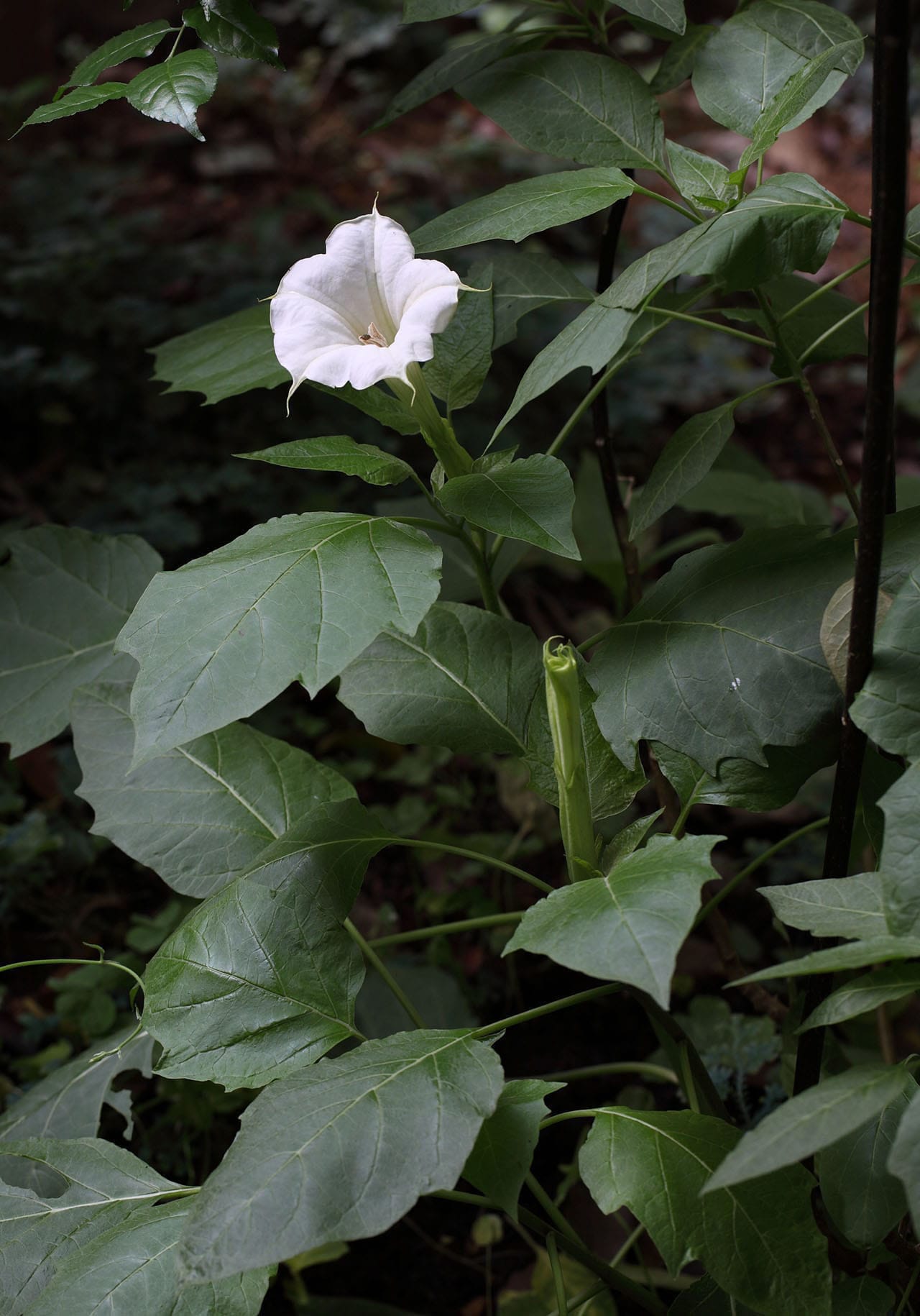Whole plant, especially the flowers and seeds.3
Supportive treatment. Activated charcoal therapy has been used for gastrointestinal decontamination and physostigmine has been used as an antidote for Datura poisoning.10
Annual stout herbs, 50–150 cm tall. Leaves alternate; leaf blades 5–20 × 4–15 cm, base asymmetrical, margin irregular in shape. Flowers solitary, calyx 4–9 cm long. Corolla white, yellowish, or pale purple, 14–20 cm long, funnelform; limb 6–10 cm in diameter; lobes mucronate at apex. Stamens 5; styles 11–16 cm long. Capsules about 3 cm in diameter, with short prickles. Seeds about 3 mm wide, pale brown.13
Highly toxic; use with caution. Flowers used in TCM: reduce wheezing and suppress cough, dispel wind, stop convulsions and relieve pain. Recommended dose: 0.3–0.6 g.2,14–16
In 2004, a 60-year-old woman was admitted with confusion, tachycardia and agitation after taking a herbal broth prepared with "Ju Lung Fa" collected in Sheung Shui. The plant was subsequently identified as D. metel. In 2010, a 57-year-old woman was admitted with similar clinical features after taking a herbal broth prepared with C. grandiflora flowers as one of the ingredients. The source was traced to the mixing up of the herb with flowers of D. metel. In both cases, solanaceous tropane alkaloids were detected in the concerned specimens; and they recovered uneventfully.9
Solanaceous tropane alkaloids can be detected by GC-MS and LC-MS/MS.17




